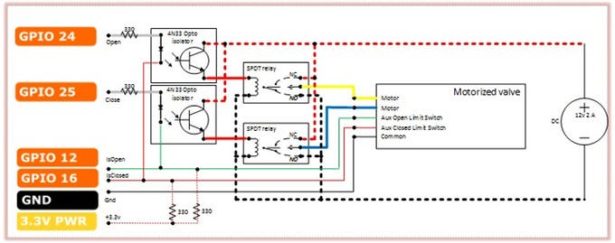I live in Canada, in a peaceful area. There are still some bad things that could happen and have a negative impact on my property. Here are a few examples:
Fire
A friend of mine has lost his house just because the dishwasher was broken. As per local regulations, we have smoke detectors on all floors, connected all together, AC powered and also battery protected. When smoke is detected, it beeps. They are designed with just one intent: wake people up and convince them to get out of the house as quick as they can.
There is a 3/4 pipe entering in the house, in the basement and nothing to handle the case that pipe or any accessory could break. It does not take that long to transform my basement into a pool…
Extremely low temperature
During winter time, temperature can go down to -30 C. If no sufficient heating is maintained, it does not take that long to have big issues with many things, one of them being.. the plumbing
The expectations
Here is what I would expect the system could do:
Fire
I'm OK with smoke detectors beeping (it could save my life) but I would like the system to notify my neighbours as well (after a delay, just in case I had forgotten my toasts and created a false alarm) and it makes sense to notify me as well when I'm out of the home. If the system is stable enough (more than many commercial products), I would consider to notify 911 as well.
Water
I have a different expectation here. This is a local problem that should be handle locally and automatically. I'm interested in being notified but I would prefer a “Main valve has been turned off due to water leakage” message than “The pool is filling up, sorry guy”
Temperature (optional)
I'm OK with a notification when temp is going so low it could break something.
This project intends to provide innovation at lost and based on existing components. As end-user, I want to add a constraint to the design: I don't want batteries everywhere on all detectors, it's a pain to swap batteries, even after a long period of time. If it is really long (not the case with existing wireless sensors), the problem is .. that I do not remember where the sensors are located…
The hardware solution
The project is not so complex but I prefer to proceed step by step and to handle each sub-system one at a time.
1) Fire detection sub-system
I don't want to interfere with the existing system (for obvious reasons related to safety). I have 3 detectors, daisy-chained, one per floor. I bought them from Kidde and they also offer a small relay you can use to interface to the detectors. Here is how it works:
Detectors
All detectors are connected to a dedicated 110v AC circuit, with its own breaker. They are also daisy-chained (red wire) in order to make them all beep when one of them detects smoke/fire.
Relay
The relay is also connected to the same AC circuit and to the red wire. Two features are available:
– Do something when an alarm is detected or when the alarms goes off. To use this feature, connect your secondary circuit on Common-NC/NO
– Trigger an alarm intentionally. It looks useless (why should I turn the noisy “beep' on ??) but it helps to test your system to be sure it will work when a real fire alarm will be detected.
Outdoor bell
Once an alarm is detected, a timer is started (see later in C# code), after one minute, if the alarm is not cancelled (by the guy who forgot the toasts..), then a relay turns the big outdoor bell On. There are two ways to turn it off: either to handle the root case and to make the alarm disappear, or to manually turn the bell Off
2) Water leakage detection sub-system
Detectors
I used small detectors I bought from Aartech in Toronto. Here is how it looks like once installed:
There is a DC motor within the valve and it turns clockwise or counter-clockwise depending on polarity. There is a feed-back loop that indicates whether the valve is effectively On or Off. To turn it On, just apply a positive voltage to the upper-left connection. If it is already On, it will do nothing since the other side of the opto-isolator is connected to the feed-back “Valve is On” loop.
For more detail: Personal Home Safety Agent



